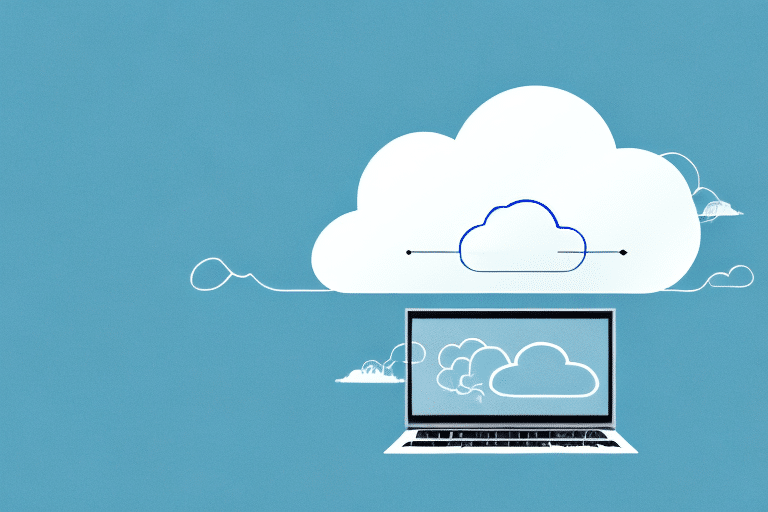Unlocking the power of data has become an essential aspect for businesses in today’s digital age. With vast amounts of information being generated every second, it is crucial to have efficient data ingestion and ETL processes in place. Google Cloud Platform (GCP) offers a comprehensive suite of tools and services that can streamline these processes, enabling organizations to harness the true potential of their data. In this blog post, we will explore what GCP is and delve into different types of data ingestion methods. We will also discuss how you can optimize your data workflows on GCP to ensure seamless integration and transformation. So, fasten your seatbelts as we embark on a journey towards streamlining your data ingestion and ETL processes with GCP!
What is Google Cloud Platform?
Google Cloud Platform (GCP) is a powerful cloud computing platform provided by Google that offers a wide range of services and tools for businesses to build, deploy, and manage applications and data. It provides organizations with the flexibility to scale their infrastructure as needed and access cutting-edge technologies without the hassle of managing physical hardware.
One of the key components of GCP is its robust storage capabilities. With options such as Google Cloud Storage, businesses can securely store vast amounts of structured and unstructured data in a cost-effective manner. This means you no longer have to worry about storage limitations or investing in expensive on-premises servers.
In addition to storage, GCP also offers various other services like BigQuery for analyzing large datasets quickly, Dataflow for stream processing, Pub/Sub for real-time messaging, and Dataproc for running Apache Spark and Hadoop clusters. These services work together seamlessly to provide end-to-end solutions for ingesting, transforming, analyzing, and visualizing your data.
Moreover, GCP’s machine learning capabilities are truly remarkable. With tools like AI Platform providing pre-trained models or allowing you to train your own custom models using TensorFlow or PyTorch frameworks – the possibilities are endless when it comes to leveraging artificial intelligence in your applications.
Google Cloud Platform has established itself as a leading player in the cloud computing market due to its extensive range of services coupled with high performance and scalability. By harnessing its power effectively, businesses can take their data ingestion processes to new heights while optimizing costs and driving innovation at an accelerated pace.
What are the different types of data ingestion?
Data ingestion is a critical part of any data processing workflow. It involves bringing data from various sources into a central repository for further analysis and processing. On Google Cloud Platform (GCP), there are several different types of data ingestion methods available, each suited for different use cases.
One common method is batch ingestion, where data is collected and processed in large batches at scheduled intervals. This approach is ideal when dealing with historical or offline data that doesn’t require real-time analysis.
Real-time streaming ingestion, on the other hand, allows for continuous flow of data from sources such as sensors or logs. This method enables organizations to quickly respond to events as they happen and make timely decisions based on up-to-date information.
For structured datasets, GCP offers options like Cloud Storage or BigQuery Data Transfer Service for efficient movement of bulk data. These services provide scalable storage solutions with built-in features like automatic compression and encryption.
When dealing with unstructured or semi-structured data, tools like Cloud Pub/Sub can be used to ingest messages in real time while ensuring reliability through features like message ordering and acknowledgement.
In addition to these methods, GCP also provides services specifically designed for specific use cases such as IoT Core for handling device-generated data or Firebase Analytics for mobile app analytics.
By understanding the different types of data ingestion available on GCP and choosing the right method based on your requirements, you can streamline the process and ensure efficient collection of relevant data for further analysis and insights.
How to streamline data ingestion and ETL processes on GCP?
Streamlining data ingestion and ETL (Extract, Transform, Load) processes is essential for businesses looking to optimize their data workflows on Google Cloud Platform (GCP). By efficiently managing the flow of data into GCP services, organizations can gain valuable insights and make informed decisions. Here are some strategies to streamline these processes on GCP.
Leverage managed services like Cloud Pub/Sub for real-time streaming ingestion. This allows you to decouple your data producers from consumers and provides reliable message delivery at scale. In addition, use Dataflow or Apache Beam for batch processing and complex transformations. These tools enable parallel processing of large datasets while ensuring fault tolerance.
Next, consider using BigQuery as a powerful analytics tool that eliminates the need for traditional ETL pipelines by directly ingesting raw data in its native format. With automatic schema detection and nested querying capabilities, BigQuery simplifies your ETL process significantly.
To ensure smooth operations, monitor your pipeline with Stackdriver Monitoring and Logging. Set up alerts for potential bottlenecks or failures so that they can be addressed promptly. Moreover, automate deployments using CI/CD practices with tools such as Cloud Build or Deployment Manager to improve reliability and scalability.
Take advantage of machine learning technologies in GCP like AutoML Tables or AI Platform to automate certain aspects of data transformation tasks. These solutions can reduce manual effort significantly while maintaining accuracy.
By implementing these techniques on GCP, businesses can streamline their data ingestion and ETL processes effectively while improving efficiency and reducing operational costs.
Conclusion
Streamlining data ingestion and ETL processes on Google Cloud Platform (GCP) is essential for organizations to efficiently manage and analyze their data. By leveraging the various capabilities and services offered by GCP, businesses can simplify their data pipelines and ensure reliable data ingestion.
Throughout this article, we explored what GCP is and the different types of data ingestion methods available. We discussed how batch processing, streaming, and change capture techniques play a crucial role in collecting and transforming large volumes of data.
To streamline these processes on GCP, it is important to leverage key services such as Cloud Storage for storing incoming datasets, Pub/Sub for real-time messaging between components, Dataflow for scalable ETL transformations, BigQuery for analytics-ready storage, and Composer/Airflow for orchestrating workflows.
By adopting a modular approach to design your data pipelines using these GCP services, you can achieve enhanced scalability, reliability, flexibility while reducing complexity. Additionally, ease integration with other tools within the Google ecosystem like AutoML or AI Platform enables advanced analytics or machine learning on ingested data.
Remember that effective monitoring is also critical when streamlining your data ingestion process. Leveraging Stackdriver Monitoring gives you visibility into pipeline performance metrics to identify bottlenecks or anomalies promptly.
In summary, GCP provides a comprehensive suite of tools that enable organizations to streamline their entire end-to-end process of ingesting and transforming large amounts of structured or unstructured datasets.
Additionally, it allows seamless integration with other Google Cloud products fostering an environment conducive to advanced analytics, machine learning, and automation.
So go ahead,take advantage of the powerful capabilities offered by GCP, and unlock valuable insights hidden within your vast ocean of raw unprocessed information.
Streamline your operations today!





